A water droplet, running off the cedar we all hunched under, relentlessly plinked against one of the big brown bags at our feet. While the rain dripped around us, GPC stewardship coordinator Micaela Petrini coached the assembled crew from the Washington Conservation Corps (WCC) who were planting in this corner of the Filucy Bay Preserve. Inside the big brown bags were hundreds of native bare root plants of a dozen varieties, tidily bundled together and waiting for their new home.
Whether or not the WCC crewmembers were contemplating the implications of their efforts, or merely the soggy forecast for the week is hard to say. Regardless, the crew jumped right in after being given the project’s plans and a rundown of how to work with bare root stock. When WCC finished later that week, over 3,000 native trees and shrubs were planted across six acres of what had been mostly blackberries and scotch broom, cleared in preparation for their arrival the previous fall.
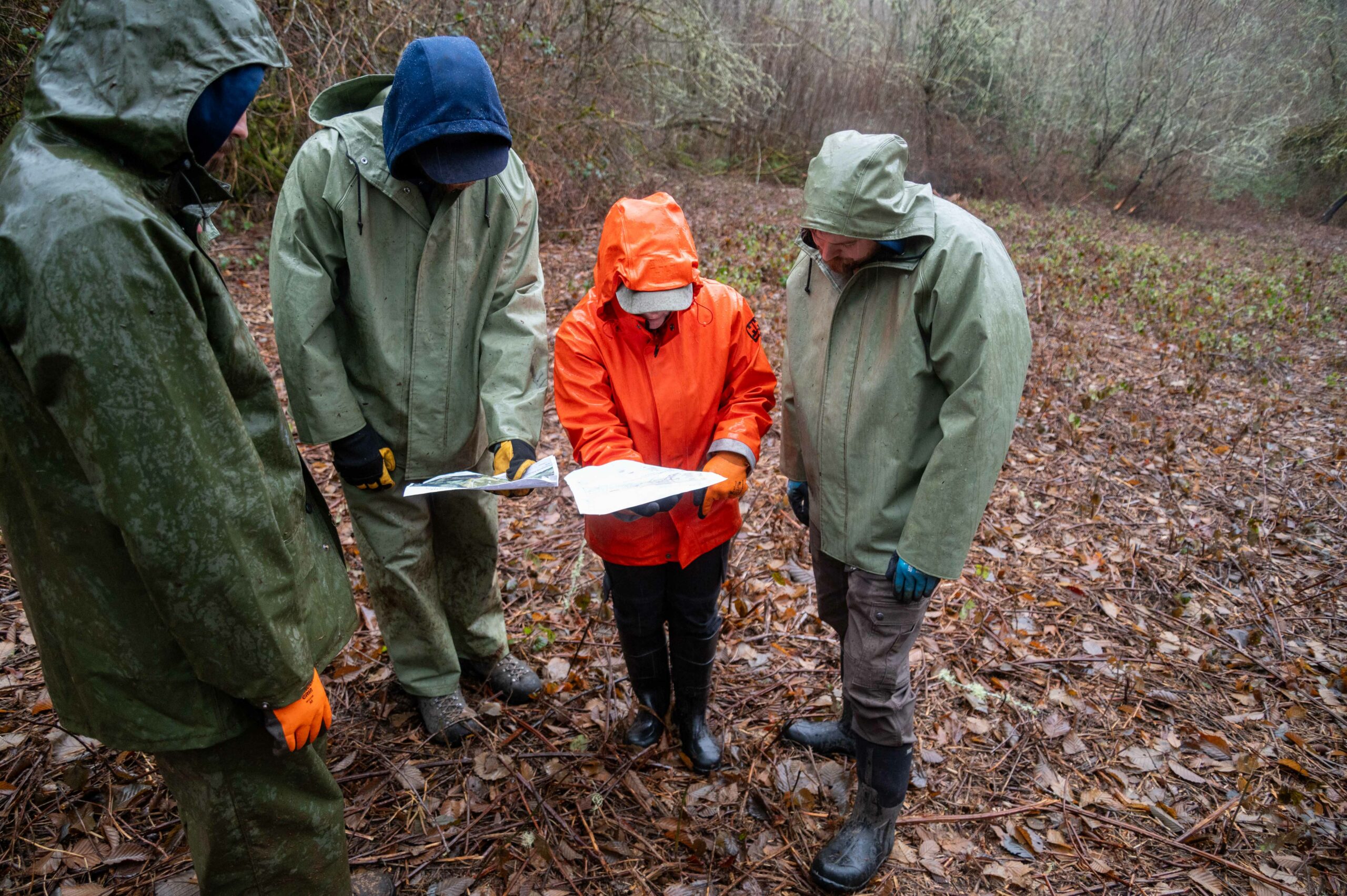

That could simply be the beginning and end of the story — plants acquired, planted, and done. But luck and a basic plan alone won’t help plants establish and grow healthy. Success relies on human knowledge that stretches back to our earliest roots. Interacting with plants has morphed into complex understandings of individual species’ needs in cultivation. Plant propagation, placement, and installation take a tremendous amount of forethought and knowledge.
You likely know the basics of how plants grow: they need water, sunlight, and a rooting medium containing necessary minerals and elements like carbon and nitrogen. Different plants need varied amounts of sunlight, water, and nutrients to live their best lives (along with a host of relationships with other species)—traits inherited over time as they adapted to fill niches within an ecosystem. A Douglas fir doesn’t want to sit in a shady bottomland with wet roots, but a western redcedar is happy there. A red alder seedling can grow in the path of last year’s landslide, but a bigleaf maple might need a little more time for soil fertility to increase. Obviously, you don’t just fling any old plant anywhere.
Understanding plant dormancy is a crucial key to this puzzle and has seasonal relevancy as trees and shrubs are waking up all around us. Restoration with no regard to biology will fail, so the GPC stewardship team incorporates this into all their restoration plans. Certainly, the WCC crew would have preferred digging in trees on a balmy spring day, but catching plants while they are metabolically asleep is vital.

In the Pacific Northwest, planting bareroot stock should happen from late fall to mid-winter. Any earlier in fall and you’ll disturb the final moments of a plant’s work to go dormant. Extending into spring and you’ll risk stunting the season’s growth or even killing plants because they haven’t had time to work their roots into their new home. In an ideal transplanting situation, a plant goes dormant and is dug up in one place, and then is replanted and wakes up in another.
Of course, sleeping isn’t exactly what plants are doing in dormancy. Their main quest is to store energy and avoid environmental damage during the harshest part of the year. When a deciduous plant’s leaves turn color and then drop in the fall, it’s preparing for dormancy by reclaiming the chlorophyll in their leaves and then jettisoning the part of their anatomy that makes them most vulnerable to moisture loss and cold damage. Evergreen plants approach dormancy with a variety of tricks but the most obvious adaptations are waxy, thick foliage like those of madrone leaves and fir needles that can persist through the cold. Overall, dormancy is a spectrum between “awake” and “asleep” that depends on a plant’s growing location, seasonal conditions, and even age.
Just as the processes in our body are dictated by chemical reactions — so are those of plants. Plants play a routine game of measuring light via photoreceptors, which produces abscisic acid or ABA. This hormone is created in response to stress, but it also balances the production of other vital hormones called auxin and ethylene. Auxins are primarily responsible for growth during the warmer times of the year, sitting in the outer roots and shoots of a plant. Ethylene, amongst other things, is the hormone that helps deciduous plants prepare for dormancy by detaching leaves and sealing off attachment points to avoid further moisture loss or the entry of pathogens.
This chemical balancing act is happening around us, all the time. When the first deciduous trees and shrubs across our region break bud (splitting open the scale coverings that protect developing leaves), they are acting on instructions gathered from the world around them. As daylight lengthens, a plant’s photoreceptors become active and decrease ABA production, allowing auxin production to ramp up and gradually break dormancy.
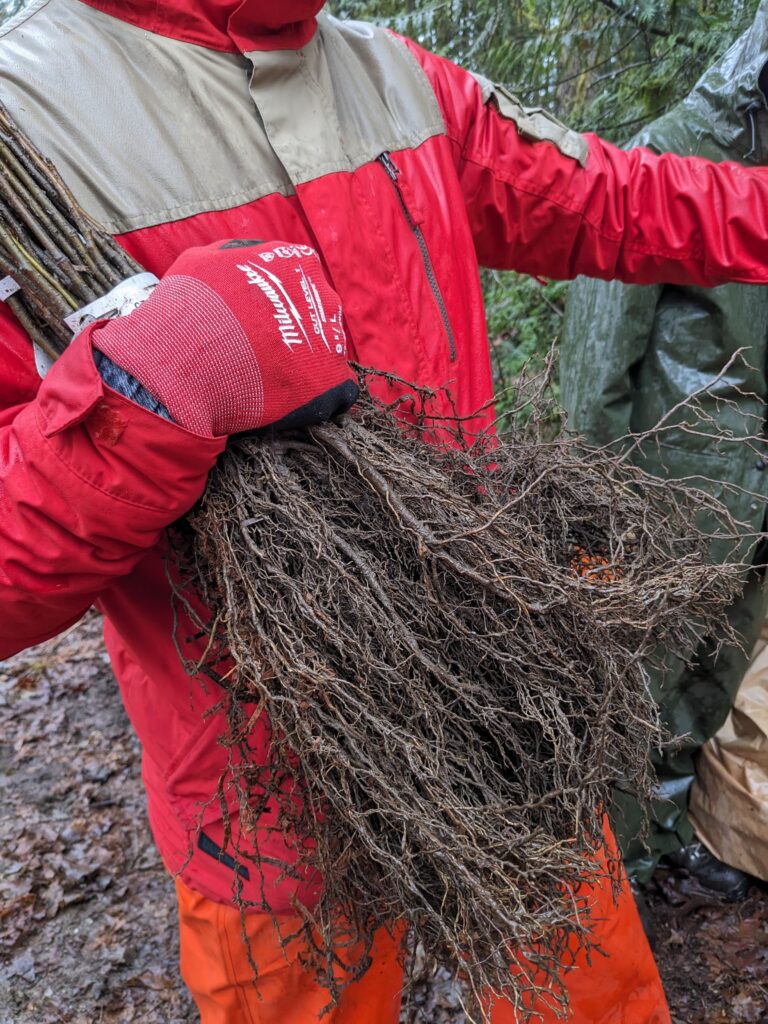
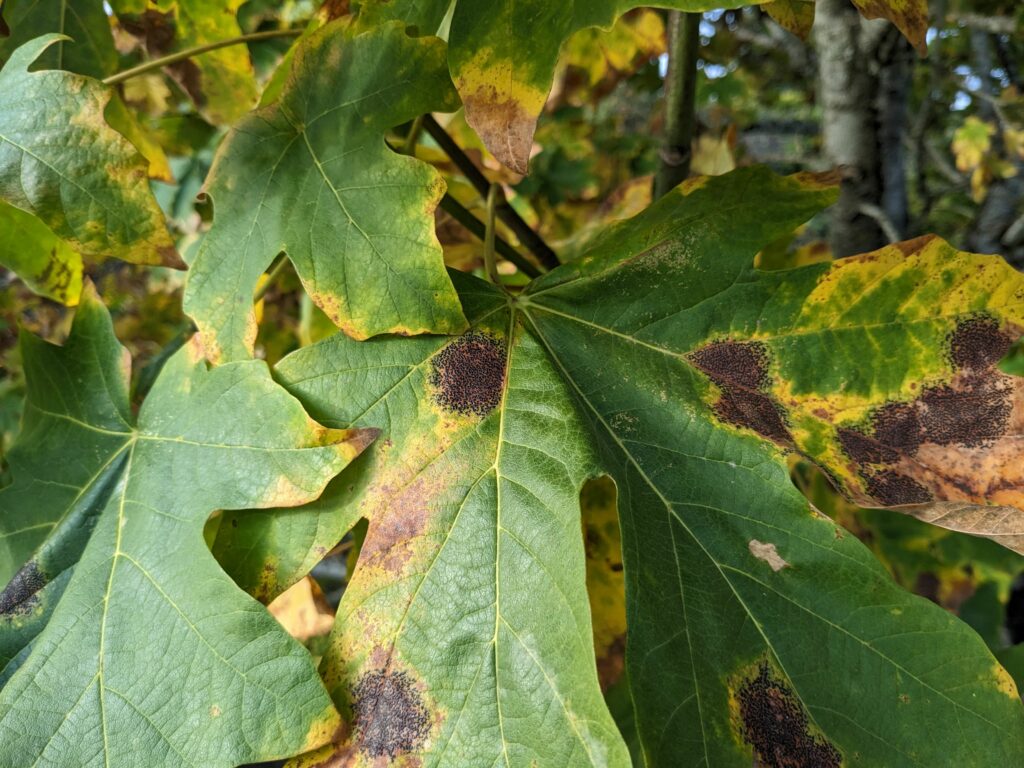
A plant pulled up in the middle of the growing season will have stress responses that tell them to put energy into healing broken roots and stems, reducing their ability to grow more leaves and in turn, create more food for themselves. At best this can lead to stunted plants, at worst it will kill them. In a restoration setting you know some plants won’t survive (that’s just how nature rolls), but tolerance is low because of the funding and human input required — we do our best to reduce every risk possible and that involves using the best practices available.
If you go out today and observe local plants, you’ll begin to notice the individual details as they re-enter the growing season. A row of the same species of trees might be in slightly different places because of a combination of genetics and environmental factors, while different species have quite unique approaches to spring. The first buds that swell and break open on a bigleaf maple are delicately packed with both flowers and leaves. First a long stem covered in both male and female flowers spills out, followed by leaves that unfold after being layered around the flowers. Red alders by contrast have already opened their flower buds, which extend into long male catkins and clustered female “cones” well before their separate leaf buds begin to break. As an evergreen, a Douglas fir can wake up and wait around till conditions have leveled out because they already have photosynthetic needles preserved from the previous season. They break bud on new growth in late spring well after they’ve flowered and sent pollen swirling off on the wind.
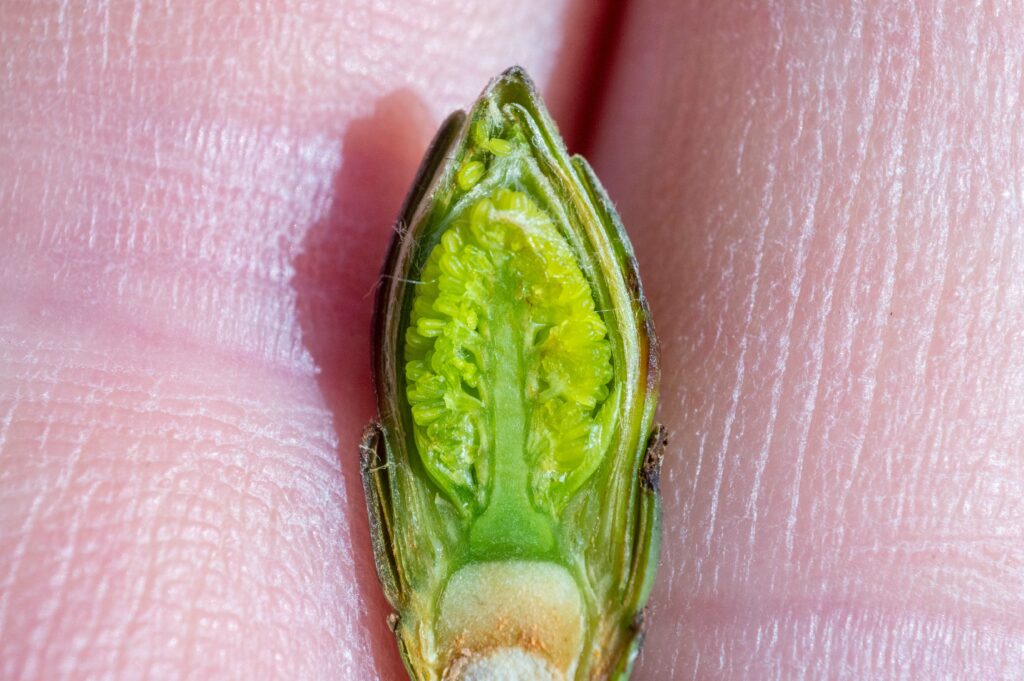
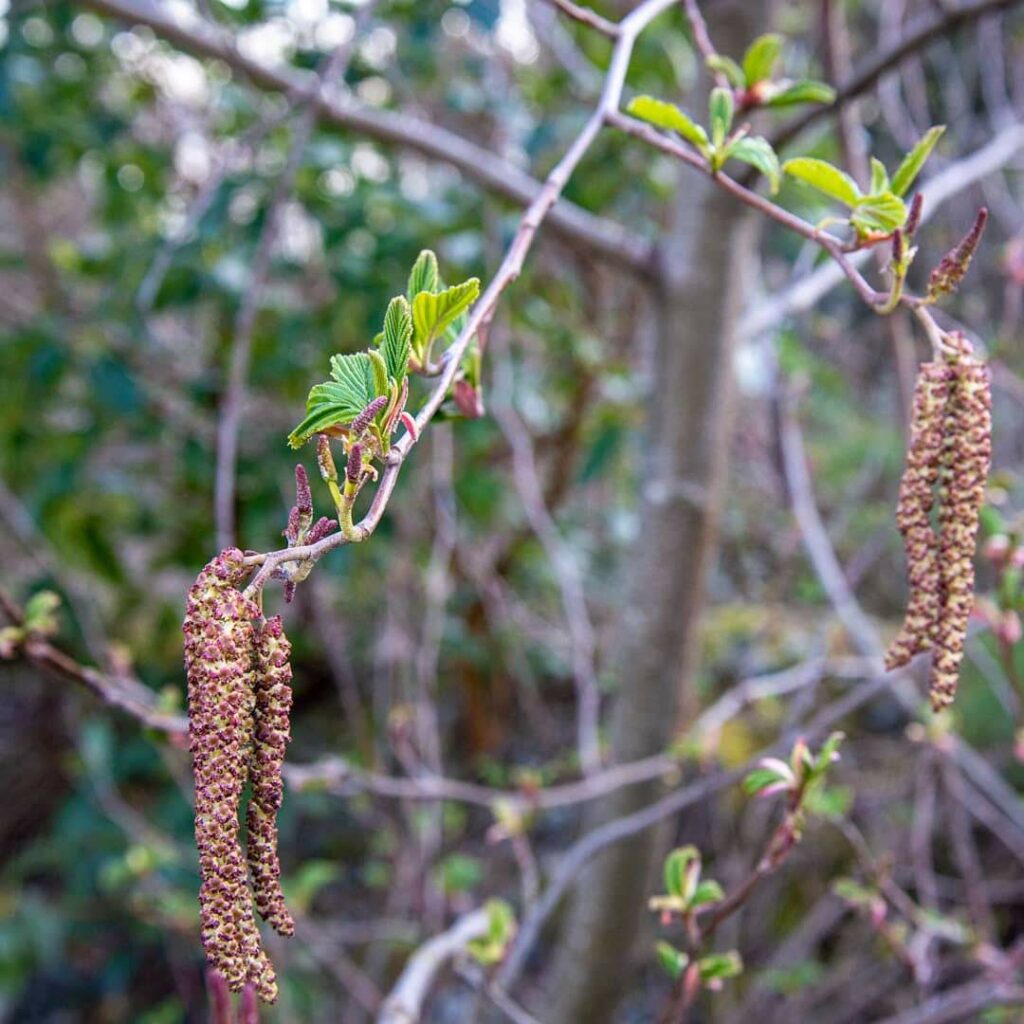
Generalizing the lives of plants is difficult, which is why the work of the people who grow all these plants is so challenging. Most of the trees and shrubs that GPC and other conservation organizations across the state use come from the Washington Association of Conservation Districts Plant Materials Center in Bow, Washington. This Skagit Valley non-profit had the job of growing a wide range of native plants from seed, providing conservation districts, landowners, and restoration projects with high quality bare root plants suited for their location. (Here’s a fun podcast interviewing the center’s director.)
It is no miracle that the new plants now growing at Filucy Bay germinated and grew to size enough to survive being dug up, shipped, and stuck in the ground on the other side of Puget Sound. This is possible because people have put years of research and demanding annual work into propagation at the Plant Materials Center. Even sourcing the right seeds takes careful consideration because widespread species like Douglas firs are adapted to their very specific environments. We wouldn’t want to plant Douglas firs that were grown from seed stock collected on the east side of the Cascades — they wouldn’t take to our long wet season so well as seeds from the Puget Sound lowlands.
As you walk around this spring, enjoying plants flowering and leafing out, take a moment to consider all the delicate preparation they’ve done to get to this point. In some ways plants display incredible resiliency, being able to ebb and flow with annual seasonal variation. But they are also quite vulnerable to climatic change. If we can work to give them a leg up in tenuous moments, to make sure buds break open to healthy leaves, it honors the miraculous cycles plants go through. Large-scale land conservation and habitat connectivity is one way to help, preserving genetic diversity and giving plant species a chance to adapt to change. Creating carefully planned restoration efforts that leverage plant and place-based knowledge is another important tool for land trusts.
If you get a chance to join GPC for a restoration project in the future, or plant native plants in your own yard, know that you are taking part in a long chain of work. You don’t have to know all the pieces of the puzzle, but if you give a tree or shrub a good home and dig them in at the right time, know that you’re doing a little bit to help. Planting natives in your yard and supporting GPC’s stewardship efforts also support growers like the Plant Materials Center, who are integral to successfully reintroducing native plants into landscapes overrun with a handful of invasive species or simply need some love. Plants are the foundation of every ecosystem on the planet. That seems as good as any reason to pop a red-flowering currant or a bigleaf maple in the ground, but of course with careful planning.

